-
The early medieval stronghold at Grzybowo from the tenth to eleventh centuries Antiquity (IF 1.9) Pub Date : 2025-06-03
Marcin Danielewski -
Retiring the Projectile Point Series Concept and Chronology in the Great Basin and Colorado Plateau American Antiquity (IF 2.7) Pub Date : 2025-06-03
Alan R. SchroedlThe concept of projectile point series was first developed in California and the Great Basin in the 1950s and 1960s. In 1981, applying the Monitor Valley projectile point key, Thomas (1981) assigned chronological ranges to five projectile point series for the Great Basin, the Gatecliff Series, the Humboldt Series, the Elko Series, the Rosegate Series, and the Desert Series, which were based on the
-
Small-Scale Migrations among Early Farmers in the Sonoran Desert American Antiquity (IF 2.7) Pub Date : 2025-06-03
James T. Watson, Aaron Young, R. J. Sliva, Angela M. Mallard, Rachael ByrdMigration played a significant role in shaping the Native populations of the southwest United States and northwest Mexico. Large-scale migrations into and across the region were underlain by small-scale (intraregional) population shifts affected by environmental fluctuations (declines and improvements) and social phenomena such as aggregation and the spread of sociopolitical spheres of influence within
-
Halberds of power: an Early Bronze Age hoard from Muszkowo in Poland Antiquity (IF 1.9) Pub Date : 2025-06-02
Justyna Baron, Kamil Nowak, Marek Grześkowiak, Anikó Horváth, Stanisław Sinkowski, Dawid Sych -
The landscape of the Zanj Rebellion? Dating the remains of a large-scale agricultural system in southern Iraq Antiquity (IF 1.9) Pub Date : 2025-06-02
Peter J. Brown, Jaafar Jotheri, Louise Rayne, Nawrast S. Abdalwahab, Eric Andrieux -
Ochres as earth pigments in Hellenistic and Roman polychromy: State of the art and future directions on material origins and trade Journal of Archaeological Science (IF 2.6) Pub Date : 2025-05-30
Ariadne Marketou, Alexandra RodlerOchres are naturally occurring materials that are abundant in various geological environments and geographic regions and that have been used for a range of different purposes throughout history. Their wide use as pigments in ancient art is well-documented and, due to their abundancy, it is often presumed that ochres were extracted from locally available sources. However, ancient literary sources underline
-
Life along the medieval frontier: archaeological investigations of the south-eastern long wall of Mongolia Antiquity (IF 1.9) Pub Date : 2025-05-29
Gideon Shelach-Lavi, Chunag Amartuvshin, Dor Heimberg, Daniela Wolin, Gantumur Angaragdulguun, Tal Rogovski, Jingchao Chen, Or Fenigstein, Tikvah Steiner, William Honeychurch -
The relief of El Cerrón: insights into central Iberian elite identity in the Late Iron Age Antiquity (IF 1.9) Pub Date : 2025-05-28
Pablo Sánchez de Oro, Fabio Saccoccio, Mariano Torres Ortiz, Luis Berrocal-Rangel -
Seafaring megaliths: A geoarchaeological approach to the Matarrubilla giant stone basin at Valencina (Spain) Journal of Archaeological Science (IF 2.6) Pub Date : 2025-05-28
Luis M. Cáceres Puro, Teodosio Donaire Romero, José Antonio Lozano Rodríguez, Marta Díaz-Guardamino, Francisco Martínez-Sevilla, Alicia Medialdea, Miren del Val, Jonàs Alcaina-Mateos, Joaquín Rodríguez-Vidal, Fernando Muñiz Guinea, Juan Manuel Vargas Jiménez, Miguel Ángel Rogerio-Candelera, Leonardo García SanjuánA broad multidisciplinary approach is deployed to study an exceptional megalithic feature: the stone basin that presides over the chamber of the Matarrubilla tholos, part of the Valencina Copper Age mega-site (Sevilla, Spain). The study, including geoarchaeological characterisation and sourcing of the stone, traceological analysis of its surfaces based on photogrammetry and morphometrics, digital image
-
A generative model for exploring differences in mortality associated with stressor exposure risk in bioarchaeological contexts Journal of Archaeological Science (IF 2.6) Pub Date : 2025-05-27
Bronwyn Wyatt, Amy Anderson, Stacey Ward, Laura A.B. WilsonGenerative models are an underutilized tool in bioarchaeology that make it possible to directly interrogate how age-at-death is influenced by varied risk of exposure to stressors, while accounting for factors which are ordinarily invisible to bioarchaeologists. Further, the visibility of suspected differences within populations at the sorts of sample sizes common to bioarchaeology can also be examined
-
Iron Age ship cargoes from the harbour of Dor (Israel) Antiquity (IF 1.9) Pub Date : 2025-05-26
Assaf Yasur-Landau, Marko Runjajić, Evgeny Shegol, Remi Rosen, Karsyn Johnson, Deborah Cvikel, Shirly Ben-Dor Evian, David E. Friesem, Tzilla Eshel, Gunnar Lehmann, Cassandra Donnely, Artemis Georgiou, Harel Shochat, Meir Edrey, Dafna Langgut, Thomas E. Levy -
Using intestinal parasites to identify the utilization of archaeological structures: A 12th-13th century sewer systems from an Islamic funduq (Murcia, Spain) Journal of Archaeological Science (IF 2.6) Pub Date : 2025-05-26
Ramón López-Gijón, Alicia Hernández-Robles, Salvatore Duras, Mireia Celma, Ana Curto, José Ángel González-Ballesteros, Benjamin Dufour, Matthieu Le Bailly, Jorge A. EiroaThe discovery of specific parasites in archaeological contexts provides unique insights into the hygiene, sanitation, and socioeconomic dynamics of ancient populations, as well as their patterns of mobility. Paleoparasitological evidence offers a window into the spread of infections across different regions and time periods. This investigation leveraged paleoparasitology to explore the utilization
-
A method for constructing demographic profiles of Ovis orientalis/O. aries using Logarithm Size Index scaling Journal of Archaeological Science (IF 2.6) Pub Date : 2025-05-26
Melinda A. ZederThis paper presents a new method for constructing demographic profiles of archaeological sheep skeletal assemblages drawing on a method developed for Sus scrofa (Zeder and Lemoine, 2020a) and, most recently, for goats (Zeder, 2024a). This method normalizes metric data using the Logarithm Size Index (LSI) scaling technique. LSI values of post-crania metric data of modern wild sheep from Iran and Iraq
-
Life beyond the lakes: An analysis and implications of a Pleistocene combustion feature on the Pike River in South Australia Journal of Archaeological Science (IF 2.6) Pub Date : 2025-05-24
Craig Westell, Amy Roberts, Mike W. Morley, Ian Moffat, Vito C. Hernandez, Nigel A. Spooner, Kathryn McDonnell, Rachel Rudd, Fiona Petchey, the River Murray and Mallee Aboriginal CorporationThe Pike River is an anabranch and palaeochannel of the Murray River located in South Australia's Riverland region, in the southwestern part of the Murray-Darling Basin. The floodplain contains abundant and varied archaeological evidence of Aboriginal life, including extensive deposits of shell midden exposed along the high cliff-line bounding the southeastern margin of the floodplain. The oldest of
-
The barkcloth beater of Sulawesi and its changes over time Antiquity (IF 1.9) Pub Date : 2025-05-23
Muhammad Nur, Hasanuddin, Andi Muhammad Saiful, Suryatman, Bernadeta AKW, Ratno Sardi, Muhammad Alif, Fakhri, Nani Somba, Nur Ihsan -
Trace elements, maturation processes and diagenesis in human deciduous incisors Journal of Archaeological Science (IF 2.6) Pub Date : 2025-05-22
Ani Martirosyan, Xavier Jordana, Judith Juanhuix, Marine Cotte, Nuria Molist, Javier Irurita, Cristina Santos, Assumpció Malgosa, Patrick Mahoney, Judit MoleraPost-mortem alteration of trace elements can complicate the interpretation of original biogenic signals related to diet, environment and enamel maturation processes. This study describes gradients in element concentrations for modern and archaeological deciduous incisor teeth to identify diagenetic variations in specific elements.
-
An innovative construction technique in Roman theatres: The structural analysis of the cavea substructure in the theatres of Augusta Raurica (Augst) and Aventicum (Avenches) Journal of Archaeological Science (IF 2.6) Pub Date : 2025-05-22
Linda Dobosi, Dezső HegyiAncient Roman engineers used different methods when building the substructure of the seating area (cavea) of theatres and amphitheatres. In the northwestern provinces of the Empire, they often supported the seats by an artificial earth embankment which posed the structural problem of containing the soil infill. Because the curved perimeter wall of the cavea was not able to withstand the lateral earth
-
Dual role of human activities and climate in pre-industrial nitrogen shifts in Ireland Journal of Archaeological Science (IF 2.6) Pub Date : 2025-05-21
Sarah Ferrandin, Gill Plunkett, Kate Britton, Eric Guiry, Fiona BeglanePast research has uncovered a shift in herbivore collagen δ15N values during the Middle to Late Bronze Age (3700–2750 BP) in Ireland, attributed to intensified land-use - another example in a growing body of evidence that suggests that the Anthropocene concept (whereby humans have made significant impacts to the Earth's systems) began far earlier than previously thought (the ‘Palaeoanthropocene’).
-
What it means to be marine: Sulfur isotope variability in the historical Chesapeake Bay ecosystem Journal of Archaeological Science (IF 2.6) Pub Date : 2025-05-21
Eric Guiry, J Ryan Kenedy, Leah Stricker, Michael Lavin, Paul SzpakStable sulfur isotope (δ34S) analysis is an important tool for addressing archaeological and ecological questions about diet and mobility. A growing body of work has underscored the value of δ34S for tracing food sources linked to specific kinds of aquatic primary production, including saltmarshes, freshwater wetlands, seagrass beds, and benthic microalgal communities. Comparatively little work has
-
Andean sacred mountains during the expansion of the Inca Empire: an archaeological view from north-western Argentina Antiquity (IF 1.9) Pub Date : 2025-05-20
Gabriel E.J. López, Federico I. Coloca, Silvina T. Seguí -
‘Ribbon-decked poverty’: costume and performance in South Midlands morris dance World Archaeology (IF 1.8) Pub Date : 2025-05-20
David Petts -
Archaeologies of crime and punishment: an introduction World Archaeology (IF 1.8) Pub Date : 2025-05-20
Alfredo González-Ruibal, Paul J. Lane -
Dunavec revisited: fresh perspectives on a sixth millennium BC settlement at former Lake Maliq, Albania Antiquity (IF 1.9) Pub Date : 2025-05-19
Mirco Brunner, Adrian Anastasi, Krist Anastasi, Andrej Maczkowski, Matthias Bolliger, Martin Hinz, Sönke Szidat, Ilir Gjipali, Albert Hafner -
Applying habitat suitability modelling to establish the species identity of ambiguous animal depictions in archaeology: new insights into the wild bovids of ancient Egypt Journal of Archaeological Science (IF 2.6) Pub Date : 2025-05-14
Jakob Bro-Jørgensen, Salima Ikram, Juliet V. Spedding, Chris D. Thomas, Steven Snape, Maria Nilsson, Ignacio A. LazagabasterFor researchers studying wildlife distributions of the past, the assignment of faunal depictions and remains to species can often present considerable challenges. Regrettably, many studies do not systematically consider all options and sources of evidence and, as a result, questionable identifications are widespread in the literature, which compromises the trustworthiness of meta-analyses of human-animal
-
Womb Politics: The Pregnant Body and Archaeologies of Absence Cambridge Archaeological Journal (IF 1.6) Pub Date : 2025-05-13
Marianne Hem Eriksen, Katherine Marie Olley, Brad Marshall, Emma TollefsenPregnancy encompasses core socio-political issues: kinship, demography, religion, gender and more. In any society, the ontology of the pregnant body and the embryo-fetus holds core existential concerns. Is a pregnant body one or two beings? When does personhood begin? Yet pregnancy is still a marginal topic in archaeology and its onto-political consequences have scarcely been raised. It would be ludicrous
-
-
Policing the afterlife: judicial performance in medieval burials across the Balkans World Archaeology (IF 1.8) Pub Date : 2025-05-12
Petar Parvanov -
Evidence for punishment and execution on the foreshore: a unique early medieval burial (680–810 AD) from London World Archaeology (IF 1.8) Pub Date : 2025-05-12
Madeleine Mant, Rebecca Redfern, Janet Montgomery, Julia Beaumont, Darren R. Gröcke, Andrew Millard, Lucie Johnson -
An archaeology of the crime and punishment of young convicts: a view from colonial Australia World Archaeology (IF 1.8) Pub Date : 2025-05-12
Caitlin D’Gluyas -
Correction to: Consumption Trends, Trading Patterns and Economic Development in Italy Across Centuries: Data Analysis of Roman Amphorae in a Long‑Term Perspective Journal of Archaeological Method and Theory (IF 3.2) Pub Date : 2025-05-09
Paulina Komar, Tom Brughmans, Ekaterina Borisova -
From the Masthead to the Map: an Experimental and Digital Approach to Viking Age Seafaring Itineraries Journal of Archaeological Method and Theory (IF 3.2) Pub Date : 2025-05-08
Greer JarrettThe Viking Age (c. 800–c. 1050 ad) was characterised by a widespread rise in maritime mobility and interaction, as is made clear by an increasing range of evidence. However, this evidence provides limited information about the sailors and the sailing voyages that connected and transformed the Viking world. This paper presents an approach to reconstruct Viking Age maritime itineraries through the combined
-
Ethnoarchaeological Inductive Predictive Model: A Field Test in the Italian Alps Journal of Archaeological Method and Theory (IF 3.2) Pub Date : 2025-05-08
Enrico Croce, Francesco Carrer, Diego E. AngelucciInductive predictive modelling is a controversial tool in archaeology. Visibility, taphonomy and research history can affect the statistical reliability of an archaeological dataset to be used as a training sample for a predictive model. To overcome these biases, an ethnoarchaeological approach has been proposed. This methodology has been developed and tested on a pastoral context in the Eastern Italian
-
From Land's End to the Levant: did Britain's tin sources transform the Bronze Age in Europe and the Mediterranean? Antiquity (IF 1.9) Pub Date : 2025-05-07
R. Alan Williams, Mariacarmela Montesanto, Kamal Badreshany, Daniel Berger, Andy M. Jones, Enrique Aragón, Gerhard Brügmann, Matthew Ponting, Benjamin W. Roberts -
The glaze is less opaque on the other side: The development of Egyptian and southern Levantine glazed ceramic production from the early Islamic to Crusader periods Journal of Archaeological Science (IF 2.6) Pub Date : 2025-05-05
Carmen Ting, Itamar Taxel, Stephen W. Merkel, Oren TalOur study seeks to explore the beginnings and spread of glazed ceramic technologies across Islamic lands by focusing on the evidence from the southern Levantine coast. We selected 98 glazed ceramic samples recovered through stratified excavations of four sites along the southern Levantine coast. These ceramic samples include glazed tableware (especially the ones that do not feature the use of opaque
-
A new method for fingerprinting ochre sources using mineral magnetic measurements Journal of Archaeological Science (IF 2.6) Pub Date : 2025-05-03
Maddison L. Crombie, Agathe Lisé-Pronovost, Marcus J. Giansiracusa, Colette Boskovic, Amy Roberts, Felix Lauer, River Murray and Mallee Aboriginal Corporation, Rachel S. Popelka-FilcoffFingerprinting of iron-rich natural pigments commonly known as ochre, provides the opportunity to trace the cultural movement of these ochres in the archaeological past. This manuscript presents a proof-of-concept approach to the analysis and characterisation of ochre deposits, through the application of magnetic analytical methods. The use of measurements such as room temperature – saturation isothermal
-
Urbanization halted: regional politics and demographic changes between the 7th and the 5th centuries BCE in north Etruria World Archaeology (IF 1.8) Pub Date : 2025-05-02
Camilla Zeviani -
Stress markers and survivorship over the last 2,000 years in Milanese females and males Journal of Archaeological Science (IF 2.6) Pub Date : 2025-04-30
Lucie Biehler-Gomez, Samantha L. Yaussy, Claudia Moro, Paolo Morandini, Marta Mondellini, Daniele Petrosino, Mirko Mattia, Cristina CattaneoThis study combines paleopathological data and paleoepidemiological analyses, specifically survival analyses, to investigate the impact of eight physiological and mechanical stress markers on survivorship in a sample of 492 adult Milanese males and females across five historical periods. Pearson's Chi-squared, post-hoc tests, and survival analyses were performed on the entire dataset. The findings
-
Towards a new history of bronze making: Explaining the selection of tin bronze alloying techniques across prehistoric N.E. Iberia (2100-200BC) Journal of Archaeological Science (IF 2.6) Pub Date : 2025-04-28
Julia Montes-Landa, Enriqueta Pons, Carme Rovira, Andreu Moya, Natàlia Alonso, Marcos Martinón-TorresCopper-tin bronzes can be obtained through different techniques (i.e. natural alloying, co-smelting, cementation, co-melting and recycling). This paper presents a methodology and theoretical framework to contextually explain the logic behind the selection of bronze alloying techniques in different contexts, avoiding deterministic, aprioristic and linear narratives. To do so, we selected Northeast Iberia
-
Culturing island biomes: marsupial translocation and bone tool production around New Guinea during the Pleistocene–Holocene Journal of Archaeological Science (IF 2.6) Pub Date : 2025-04-27
Dylan Gaffney, Annette Oertle, Alvaro Montenegro, Erlin Novita Idje Djami, Abdul Razak Macap, Tristan Russell, Daud TanudirjoHumans have shaped island ecosystems for tens of millennia. A crucial part of this process included the anthropogenic translocation of wild animals between islands. Archaeological evidence presented here suggests humans introduced forest wallabies to Island Southeast Asia from Sahul (Pleistocene New Guinea–Australia) before 12,800 years ago. This is the earliest reported anthropogenic translocation
-
The afterlife of Roman roads in England: insights from the fifteenth-century Gough map of Great Britain Journal of Archaeological Science (IF 2.6) Pub Date : 2025-04-27
Eljas Oksanen, Stuart BrookesThis paper presents a new Geographic Information Systems database of travel and communications routes in England and Wales derived from medieval cartographic evidence. We argue on the basis of archaeological, physical landscape, onomastic, documentary, cartographic and other historical evidence that the network of red distance lines on the Gough Map of Great Britain, dated c. fifteenth century, represents
-
-
Evidence for large-scale rice utilization in the Guanzhong region during the final Neolithic (ca. 4600-4000 B.P.): A case study of the Yangyuan site, Xi'an Journal of Archaeological Science (IF 2.6) Pub Date : 2025-04-26
Qianyi Lin, Liya Tang, Ruichen Yang, Yanpeng Wang, Bo Gao, Xiangyu Zhang, Zhijun ZhaoRice, domesticated in the Yangtze River Basin, was introduced to the Guanzhong Plain, and became prominence alongside millets during the Longshan period (ca. 4600-4000 B.P.). This study analyzes flotation samples from the Yangyuan site, revealing a significant abundance of charred rice grains and spikelet bases, surpassing those found at other contemporaneous sites in the Guanzhong Plain. The high
-
New scientific evidence for the history and occupants of Tomb I (“Tomb of Persephone”) in the Great Tumulus at Vergina Journal of Archaeological Science (IF 2.6) Pub Date : 2025-04-24
Yannis Maniatis, Konstantina Drosou, Miren Iraeta Orbegozo, Dorothea Mylopotamitaki, Terence A. Brown, Keri Brown, Robert Frei, Sahra Talamo, Hannes Schroeder, Theodore G. Antikas, Laura Wynn-AntikasThe Great Tumulus of Vergina (Aegae) is considered to be the royal burial complex of the Macedonian kings. Beneath it four tombs were discovered, labeled Tomb I, II, III and IV. Several hypotheses have been proposed for the identities of the occupants of the “royal tombs”, but without scientific backing. We present new data from Tomb I (“The Tomb of Persephone”), which contained inhumed (unburnt),
-
Commercially relevant species in the Mediterranean Sea: A perspective from Late Pleistocene to the Industrial Revolution Journal of Archaeological Science (IF 2.6) Pub Date : 2025-04-23
Daniela Leal, Konstantina Agiadi, Maria BasThe Mediterranean Sea is the world's second-largest biodiversity hotspot and has been impacted by several environmental changes and human activities since pre-historic times. We present the results of a systematic review of the published literature on the nature and extent of these impacts on the ancient-historic Mediterranean marine ecosystems. We aim to provide an overview of the current state of
-
Network analysis in Tairona chiefdoms of the Río Frío basin, Sierra Nevada de Santa Marta, Colombia Journal of Archaeological Science (IF 2.6) Pub Date : 2025-04-23
Luis Miguel Soto Rodríguez, Juan Carlos VargasThis article analyzes the interaction networks in the Tairona chiefdom communities of the Sierra Nevada de Santa Marta, Colombia, to investigate settlement patterns and the scales of socioeconomic integration over time. Employing network analysis on the technological and typological attributes of ceramic artifact assemblages from pre-Hispanic settlements within a 40-square-kilometer area of the Regional
-
In search of draught cattle: An identification method Journal of Archaeological Science (IF 2.6) Pub Date : 2025-04-23
Phoebe Liu, Lenny Salvagno, Benjamin Wimmer, Umberto AlbarellaDraught cattle, used for ploughing and carting, contributed to drive social transformations in prehistoric societies by replacing or complementing human power. However, identifying draught cattle from archaeological sites has proven challenging due to the dearth of direct evidence. This paper presents a biometric approach to identifying draught cattle in archaeological assemblages based on metapodials
-
Fire and its products: recent developments in geoarchaeological microscopy and multi-disciplinary analysis Journal of Archaeological Science (IF 2.6) Pub Date : 2025-04-22
Matthew CantiResearch into fires and pyrogenic materials found on archaeological sites has grown exponentially in the last decade or so, producing a large specialised body of innovative methods and major interpretative advances. This review examines those developments with respect to our understanding of fire contexts and the materials produced. Although often rooted in soil micromorphology, the approaches used
-
Ethical Considerations in the Use of 3D Technologies to Preserve and Perpetuate Indigenous Heritage American Antiquity (IF 2.7) Pub Date : 2025-04-21
Medeia Csoba DeHass, Lori Collins, Alexandra Taitt, Julie Raymond-Yakoubian, Travis Doering, Lisa Navraq Ellanna, Eric Hollinger, Jorge Gonzalez, Edwell John Jr., Desireé Martinez, Meghan Sigvanna TapqaqThe past decade saw the proliferation of projects that use 3D and related technologies to engage with Indigenous heritage through museum collections and cultural heritage site digitization projects involving the documentation and sometimes physical replication of objects and landscapes; some of these projects involved Indigenous origin communities. Although 3D technologies have become more widespread
-
Art in red: New dates for paintings in the Cave of Altamira, Santillana del Mar, Spain Journal of Archaeological Science (IF 2.6) Pub Date : 2025-04-18
Qingfeng Shao, Carmen de las Heras, Alfredo Prada, Pilar Fatás, Lucía M. Díaz-González, Deborah Ordás, M. Elena Sánchez-Moral, Rainer Grün, Sara Garcês, Hugo Gomes, Virginia Lattao, George H. Nash, Alba Bossoms Mesa, Pierluigi Rosina, José Julio García Arranz, Diego Fernández-Sánchez, Hugo A. Mira, Genevieve von Petzinger, Hipólito Collado GiraldoLa cueva de Altamira es un enclave declarado Patrimonio Mundial por UNESCO, famoso por sus pinturas y grabados prehistóricos. Aunque el arte rupestre de la cueva de Altamira fue descubierto hace más de 140 años, su evolución cronológica aún no está plenamente definida (Heras, Montes y Lasheras, 2013). Las anteriores dataciones por radiocarbono del pigmento negro de alguna de sus pinturas, sugerían
-
Palynology, landscape and land use: retrospect, prospect and research agendas Journal of Archaeological Science (IF 2.6) Pub Date : 2025-04-18
Ralph M. Fyfe, Kevin J. Edwards, Laura ScobleThis paper provides a context for the use of anthropogenic palynology in the study of landscape and land use. Retrospective considerations indicate a history to current trends and inform future developments. Recent and prospective studies secure palynology as an essential element in archaeological and related environmental research. It is stressed that palynology is an inherently spatio-temporal discipline
-
Nets hidden in pottery:Resurrected fishing nets in the Jomon period, Japan Journal of Archaeological Science (IF 2.6) Pub Date : 2025-04-18
Hiroki Obata, Yoon-ji LeeThe Japanese archipelago, surrounded by the sea and rich in marine resources, has a long fishing history, dating back to the Jomon period (c. 14,000-900 BCE). Evidence of this includes discovering fish bones and fishing gear from around 2700 shell mounds. While research on the Jomon fishing nets has focused on various aspects, such as net mesh size and marine life caught, there has been limited attention
-
Seeds of controversy: Ecology, depositional context, and radiocarbon dating of Ruppia cirrhosa at the White Sands trackway Journal of Archaeological Science (IF 2.6) Pub Date : 2025-04-17
Dave Rachal, Robert Dello-RussoContext and chronology are fundamental in archaeological studies, and without rigorous standards in both fieldwork and analysis, researchers risk drawing faulty conclusions. The role of submerged aquatic plants in radiocarbon dating is a case in point. For example, research at White Sands National Park, New Mexico, has dated fossil human and megafauna trackways using Ruppia cirrhosa (Ruppia) seeds
-
15 ka old evidence of pressure flaking in the Congo basin, Democratic Republic of Congo Journal of Archaeological Science (IF 2.6) Pub Date : 2025-04-17
Isis Mesfin, Peter R. Coutros, Igor Matonda, Jérémie Vosges, Pierre-Jean Texier, Maria-Helena Benjamim, Koen BostoenWe analyze two technically sophisticated stone points dated between 15,580 and 14,319 cal. BP discovered at the open-air site of Mitshakila, Democratic Republic of Congo, combining diacritic analysis, experimentation, and traditional morphometrics. Diacritical analysis is applied following techno-functional (also called "morpho-structural") and productional approaches. An experimental corpus consisting
-
Uncovering Hidden Dynamics of Past Kinship and Exchange Relations on Papua New Guinea’s South Coast (650–300 cal BP) Through Scanning Electron Microscopy Automated Mineralogy Analyses of Pottery Sherds Journal of Archaeological Method and Theory (IF 3.2) Pub Date : 2025-04-15
Robert Skelly, Barbara Etschmann, Joël Brugger, Chris Urwin, Fiona Petchey, Teppsy BeniEthnographic accounts of Melanesian exchange systems, such as the Kula and Hiri, have significantly influenced the development of anthropology. These accounts primarily focus on male agency framed by heroic seafaring ventures, while the agency of women and their cultural practices—key to the interconnectedness of Melanesian societies—has often been overlooked. On Papua New Guinea’s south coast details
-
Spirit Cave Resilience: How Do We Explain a 10,000-Year Continuity? American Antiquity (IF 2.7) Pub Date : 2025-04-15
David Hurst Thomas, Donna Cossette, Misty Benner, Anna Camp, Erick RobinsonPaleoindians buried Spirit Cave Man in a Nevada cave, and archaeologists excavated these remains in 1940. Radiocarbon testing in 1996 dated the burial and associated grave goods as older than 10,700 years. Living just 10 miles from Spirit Cave, the Fallon Paiute-Shoshone Tribe filed a NAGPRA claim in 1997 requesting the repatriation of the Spirit Cave ancestor they call “The Storyteller.” This claim
-
Differentiating Chipped Stone Perforators from Gravers American Antiquity (IF 2.7) Pub Date : 2025-04-14
William Engelbrecht, Sean HanrahanChipped stone tools termed perforators and gravers are characterized by projections. Although the implied function of these tool types differs, there are no guidelines for classifying perforators and gravers based on their morphology. Consequently, researchers classify these tools differently, which precludes meaningful comparisons of the frequencies of these types between assemblages. A use-wear study
-
Exploring the Arrival of Domestic Cats in the Americas American Antiquity (IF 2.7) Pub Date : 2025-04-14
Martin H. Welker, John R. Bratten, Eric GuiryDomestic cats have lived alongside human communities for thousands of years, hunting rats, mice, and other pests and serving as pets and a source of pelts and meat. Cats have received limited archaeological attention because their independence limits direct insight into human societies. An adult and juvenile cat recovered from the Emanuel Point wreck 2 (EP2) reflect what are, most likely, the earliest
-
Thermal constraints on Middle Pleistocene hominin brain evolution and cognition Journal of Archaeological Science (IF 2.6) Pub Date : 2025-04-14
R.I.M. DunbarHigh latitude habitats are subject to thermally-driven energetic constraints that make their occupation challenging. This is likely to have had a particularly significant impact on energy-expensive tissue like the brain, especially during periods of lower global temperatures during the Mid-Pleistocene Ice Ages. I analyse data on endocranial volumes for archaic humans (Homo heidelbergensis, H. neanderthalensis
-
On the Mousterian origin of bone-tipped hunting weapons in Europe: Evidence from Mezmaiskaya Cave, North Caucasus Journal of Archaeological Science (IF 2.6) Pub Date : 2025-04-14
Liubov V. Golovanova, Vladimir B. Doronichev, Ekaterina V. Doronicheva, Galina N. Poplevko, Naomi E. Cleghorn, Alexander M. Kulkov, Nikolai N. Potrakhov, Viktor B. Bessonov, Nikolai E. StaroverovThis paper presents a detailed analysis of a unique pointy bone artefact produced by Neanderthals, which was found in 2003 in a Middle Paleolithic layer dated c. 80–70 ka at Mezmaiskaya Cave in the Caucasus. The definition and interpretation of anthropic traces related to technological modifications and functional use of the bone tool were analyzed using stereoscopic and metallographic microscopes
-
How can we improve statistical training in archaeological science? Journal of Archaeological Science (IF 2.6) Pub Date : 2025-04-14
Petra VaiglovaThe aim of this paper is to shine light on fundamental statistical concepts that archaeologists do not talk about enough. I argue that more deliberate discussion of these statistical ‘elephants in the room’ can have a positive impact on improving statistical training and on steering us away from perpetuation of poor research practices.



















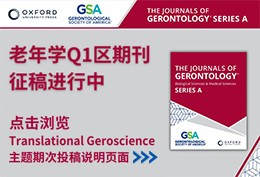
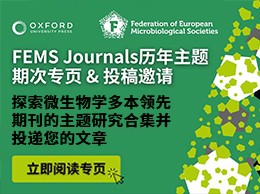






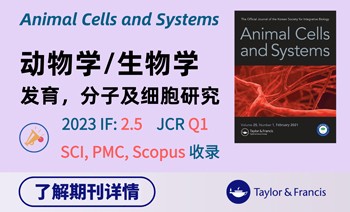

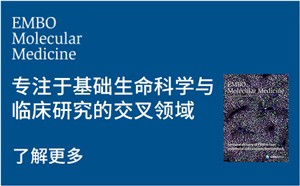
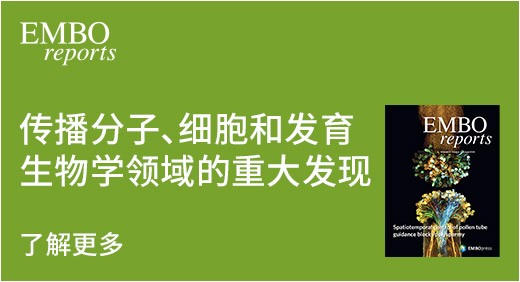
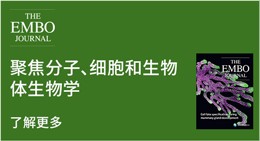


















 京公网安备 11010802027423号
京公网安备 11010802027423号